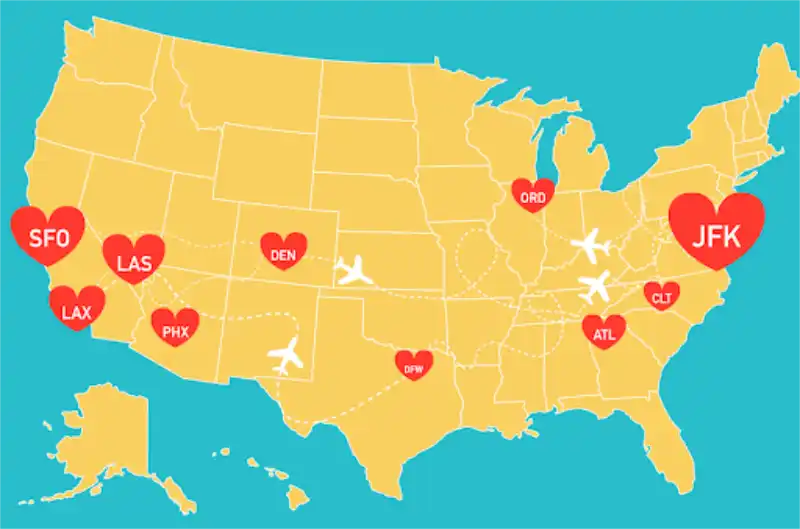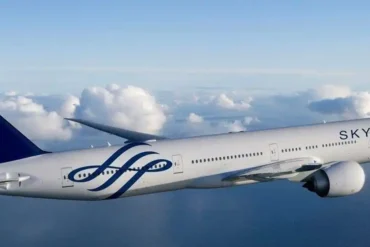Hey there! Ever wonder who’s in charge of keeping the skies safe and air travel running smoothly? That’s where the International Air Transport Association (IATA) comes in. They’ve been at it for decades, making rules, setting up procedures, and creating digital tools to make sure international air travel is both safe and efficient. If you’re new to the world of IATA, don’t worry! We’ve got you covered with this comprehensive explanation.
Now, IATA loves their numbers and codes – it’s like their secret language for keeping everything organized. They use these codes to catalog and classify all the different parts of the aviation world. Let’s dive into this fascinating system and see what it’s all about, shall we?
Types of IATA Numbers and Codes
Let’s break down the different types of numbers and codes IATA uses to keep the aviation world spinning. Check out this handy table I’ve put together for you:
| Category | Description | Format | Example |
|---|---|---|---|
| IATA Number | Unique identifier for travel agencies and airline sales offices | 7 digits | 12345678 |
| Airline Designator Code | Identifies airlines in reservations, schedules, and ticketing | 2 characters (letters or 1 letter + 1 digit) | AA (American Airlines), 7S (Ryan Air) |
| Airport Code | Identifies airports and other transport hubs | 3 letters | JFK (John F. Kennedy International Airport) |
| Metropolitan Area Code | Represents a city with multiple airports | 3 letters | NYC (New York City) |
| Accounting Code | Used for passenger operations and financial transactions | 3 digits | 001 (American Airlines) |
| Prefix Code | Used for cargo operations | 3 digits | 369 (Atlas Air) |
| Baggage Tag Issuer Code (BTIC) | Identifies each piece of checked luggage | Part of a 10-digit license plate code | Included in the barcode on luggage tags |
| Aircraft Type Designator | Distinguishes aircraft types and variants | 3 characters | 744 (Boeing 747-400) |
| Meal Code | Identifies special meal types | 4 letters | DBML (Diabetic Meal) |
IATA Numbers: Your Ticket to the Air Travel Club
So, what’s an IATA number? Well, it’s like a special seven-digit ID that IATA gives to travel agencies they’ve given their seal of approval. These agencies can then sell air tickets and be recognized in the industry. But it’s not just for travel agencies – airlines’ sales offices and points of sale get these numbers too. It’s like a location tag for where tickets are issued.
IATA plays matchmaker between airlines and travel agents, keeping an eye on money matters and making sure airlines are treated fairly. If a travel agency wants to join this exclusive club, they’ve got to go through a pretty thorough check-up process.
Why Travel Agencies Want That IATA Number

There are two main types of IATA accreditation: full and partial. Both of these give agents a gold star in the industry, showing they’re reliable and financially stable. It’s like getting a VIP pass to the international aviation community.
The full IATA accreditation is the real deal. It not only says “hey, this agency is legit,” but it also lets them issue tickets for airlines and use the Billing and Settlement Plan (BSP). That’s a big reason why travel agencies are so keen on getting that IATA stamp of approval.
But what if you can’t get the full accreditation? No worries! There are other options. You could team up with someone who already has ticket-issuing powers, like a consolidator or hosting agency. It’s like having a cool friend who can get you into the VIP section.
Different Flavors of IATA Accreditation
If you’re a travel business thinking about getting an IATA number, you’ve got a few options:
| Accreditation Type | Who It’s For | What You Get |
|---|---|---|
| Full IATA Accreditation | Non-US travel agencies | Ticket sales, IATA payment solutions, PCI certification, professional cred |
| Travel Industry Designator Services (TIDS) | Non-US entities not issuing tickets | Global professional recognition, free application |
| IATAN Accreditation | US-based travel pros with 2+ years experience | Full accreditation for ticket sales |
| IATAN Non-ticketing Accreditation | US-based agencies not selling tickets | Access to airline inventories, industry recognition |
How to Get Your Hands on an IATA Number
Getting an IATA number isn’t a one-size-fits-all deal. The effort, fees, and paperwork depend on what type of accreditation you’re after. Let’s break down the steps for getting the full IATA package:
- Sign up on the IATA Customer Portal.
- Pick your certification level (GoLite, GoStandard, or GoGlobal) and start your accreditation request.
- Fill out and submit the application form.
- Provide extra documents (proof of business operations, qualifications, travel agent experience, and financial stability).
- Pay the application and accreditation fees when IATA sends you the bill.
- If required, provide financial security.
- Wait for confirmation (usually takes a few weeks).
For IATAN accreditation, you’ll need to provide the ARC Agency Code Number. If you’re going for TIDS or IATAN Non-ticketing certifications, it’s a bit easier and quicker.
Want more details? Check out our full guide on IATA accreditation, or head to the official Travel Agency Program page on IATA’s website. If you’re in the US, the IATAN portal is your go-to. And if you’re curious about other travel agency accreditations like CLIA or TRUE, we’ve got a separate article just for that.
IATA numbers are super important for most travel agents, but IATA has a whole bunch of other codes too. Let’s check them out!
IATA’s Codes: The Building Blocks of the Aviation World
IATA is big on standardization – it’s like they’re trying to get everyone in the aviation world to speak the same language. They’ve come up with a bunch of code systems to make it easy to identify locations, companies, equipment, and more. This helps everything run smoothly when it comes to flight operations and sharing data. Let’s take a look at the main code systems in the aviation industry.
Airline Codes: The Aviation Alphabet Soup
IATA gives every airline a unique two-character code, even if they’re not IATA members. These codes use two letters or a letter and a number. For example, American Airlines is AA, KLM is KL, and Ryan Air is 7S. These codes are super handy for identifying airlines in all sorts of situations like making reservations, setting schedules, and issuing tickets.
You’ll often see these codes as the first two characters of a flight number. But keep in mind, IATA’s two-character codes are different from the three-character codes that ICAO (International Civil Aviation Organization) uses. ICAO codes are more for operational stuff, like identifying aircraft during flights. For instance, Delta Airlines is DL in IATA-speak and DAL in ICAO-speak.
Airport Codes and Other Location IDs: Where in the World?
IATA uses three-letter codes to identify airports with commercial flights. These codes can also be used for bus stations, heliports, train stations, and ferry terminals that connect with airline travel. Often, these codes come from the city names – like ATL for Atlanta, IST for Istanbul, or MEX for Mexico City. Easy to remember, right?
For cities with more than one airport, IATA also has codes for the whole metropolitan area. New York City, for example, is NYC, which is different from its airports like JFK, EWR, and LGA. You’ll see the same thing for London (LON), Tokyo (TYO), Paris (PAR), and others. These metro codes are super useful for airlines’ booking systems and travel websites, making it easy to search for flights in or out of the whole area.

Accounting and Prefix Codes: Follow the Money
Airlines also have accounting and prefix codes – these are 3-digit numbers used for all sorts of accounting stuff related to passenger and cargo traffic. You might spot the accounting code on your ticket or boarding pass – it’s usually the first three digits of that 13-digit ticket number.
Just remember, the ticket number is different from the PNR (Passenger Name Record) number you get when you book a flight. The accounting code is for passenger operations, while the prefix code is for cargo. Some airlines have both if they do passenger and cargo services.
Baggage Tag Issuer Code (BTIC): Keeping Track of Your Luggage
The BTIC is a unique code that identifies each piece of checked luggage throughout its journey. It’s part of the “license plate code” – a ten-digit number on your bag tag that helps track your luggage from check-in to pickup. Fun fact: As of 2023, only 6 out of every 1,000 checked bags were reported lost. Not bad, right?
Other IATA Codes: The Behind-the-Scenes Players
There are even more codes that you won’t see on your boarding pass or airport screens. These are used behind the scenes by airlines and airports. Here are a few examples:
- Aircraft Type Designators: 3-character codes for different types of planes (like 744 for Boeing 747-400)
- Meal Codes: Identify special meals (DBML for diabetic meals, GFML for gluten-free)
- Geographic and Currency Codes: Help with figuring out fares and distances
There are also codes for traffic restrictions, service types, and more. It’s a whole world of codes out there!
Useful Links for Further Research
Want to dive deeper into the world of aviation codes? Here are some cool resources:
- Download the full Airline Designator Codes and Location Identifiers database from IATA’s official source.
- Use IATA’s free online search tool to look up airline and airport codes.
- Check out the list of IATA airline members with their codes.
- If you’re thinking about getting a code yourself, take a look at the requirements for airline designator codes, accounting/prefix codes, location codes, or BTICs.
And there you have it – a guide to the world of IATA numbers and codes. Who knew the aviation industry could be so fascinating?


















